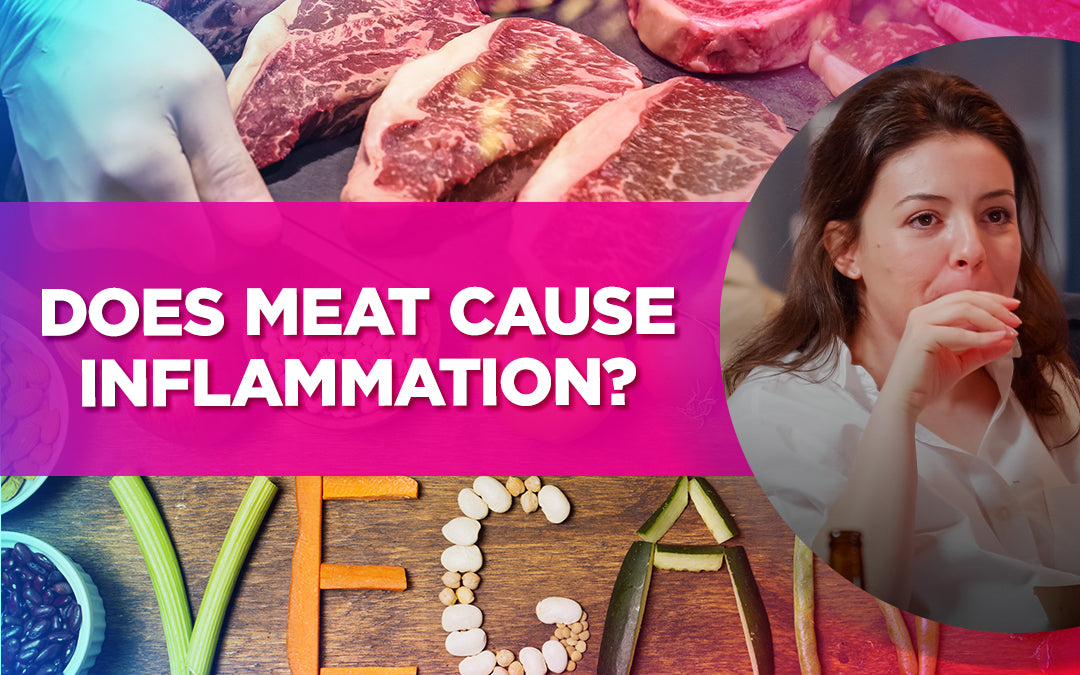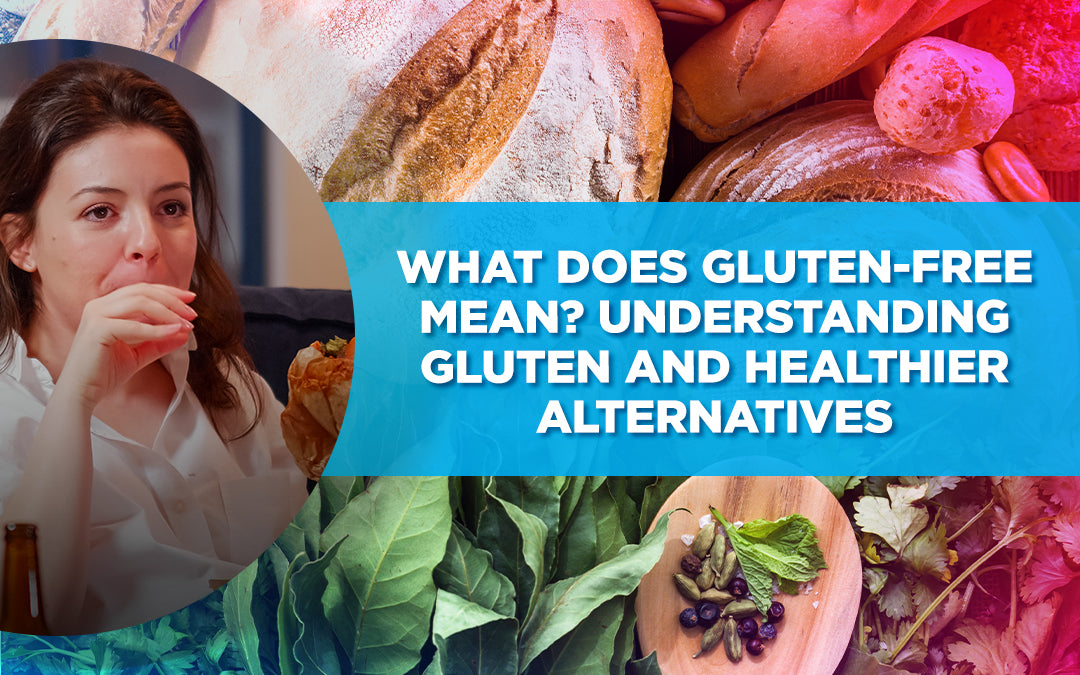Is Whole30 a Good Way to Start the New Year? Pros & Cons
Dr LivingoodShare

You want a fresh start. You want to lose weight and jumpstart your system so you can feel healthy and feel better about yourself. Is Whole30 a good way to jumpstart that? Whole30 is a viral craze diet program that’s all over social media right now.
You see depictions of massive weight loss or transformation as a result of it, so I wanted to weigh in as a doctor on what the pros and cons are for this eating approach. I’m against a lot of diets and programs. I consider those swear words around me. We always want to be looking into taking an approach that changes our eating and habits for a lifetime.
What Is Whole30?
Whole30 is an elimination form of a diet. There are way worse diet recommendations out there than what this one’s going to walk you through.
It’s at least focusing on real foods, so you can’t get away with eating unhealthy foods that have low calories.
It’s pretty strict, and requires you to eliminate alcohol, sugars, grains, beans, dairy, and other additives from your diet for 30 days.
They advertise this as a lifestyle change, but in my opinion, this is pretty restrictive to maintain for the rest of your life.
I’m going to give you some help on how you can make sure you don’t fall flat or into the trap that a lot of people fall into, which is that once someone finishes this program and adds the restricted foods back in, they end up gaining more weight than they lost.
Then you end up a part of the 100-pound weight loss club.
Not that you’ve lost 100 pounds, but that you’ve lost 10 pounds, 10 times, by losing it and gaining it back over and over.
Now, unlike a lot of other weight loss diets and programs, you’re not tracking calories, which can be absolutely exhausting.

But the problem I have with Whole30 is that it only goes for 30 days. It’s a program, because it has a start and an end date.
Your life and health and your eating habits are forever. So we need to figure out how to work this into your lifestyle so you can maintain healthy weight and not inflame your system.
What You Can Eat
When you’re on Whole30, these are the foods that they allow you to eat:
- Eggs
- Poultry
- Beef
- Pork
- Veal
- Lamb
- Chicken
- Turkey
- Duck
- Horse
- Fish
- Anchovies
- Shrimp
- Calamari
- Scallops
- Crab
- Fresh Fruit
- All Vegetables
- Nuts
- Seeds
- Olive Oil
- Coconut Oil
- Ghee
- Avocado Oil
- Tallow
- Lard
- Duck Fat
Some of the seafood on the list are bottom feeders, which end up having a lot of chemicals associated with them, particularly heavy metals.
This is especially true when you’re talking about shrimp, calamari, and scallops. I love these foods, but I would definitely only eat them in moderation because of the heavy metals they contain.
With fruit, you want to be careful because a lot of fruits like pineapple, papaya, mango, and grapes have a lot of sugar content.
With vegetables, there’s also pesticides and herbicides to consider. But fruits and vegetables are a good idea to have in a diet, though.
The Whole30 diet doesn’t allow any seed oils, which is good because they can be very, very toxic.
What You Can’t Eat
These are the foods that Whole30 wants you to avoid:
- Sugars
- Artificial Sweeteners
- Alcohol
- Grains
- Legumes (including beans)
- Dairy
- Kerogen
- MSG
- Sulfate
Nuts and seeds are allowed, but peanuts are omitted because they’re considered a legume, and the program omits beans altogether.
For some people, legumes can irritate the gut, but it’s not very common. There are a lot of minerals, like magnesium, that you’re missing out on by taking beans out of your diet.
Whole30 does eliminate chemicals like kerogen, MSG, and sulfate, which I completely agree with.
Pros & Cons
So is Whole30 a good idea?
Some of the pros of Whole30 are that you’re eating real food, and cutting out food that can be toxic for you. You’re definitely going to see a shift in your health.
There are cons, though.
One is that they discourage you from recreating your favorite baked goods or snacks, even if it’s with healthy ingredients.
If you wanted to make a cauliflower pizza for instance, or paleo pancakes, you can’t, because it has to be whole-based food.
Whole-based food is going to be more nutritious, but you’re also a human being, and this program really restricts you.
But I think the biggest problem with Whole30 is sustainability. You can’t have a cheat meal on it.
You’re encouraged to strictly stick to those guidelines and if you slip up, the founders say you should start all the way back over at zero, which is very discouraging.
Everyone slips up eventually. We have events or get-togethers like vacations and birthdays where you’re going to eat bad food.
That’s part of being a human, and as long as you don’t make it a day-after-day habit, it’s not something to feel guilty over.
Nutrition
So what do we do with this?
I think we should eat the fish, spit out the bones–keep what’s useful, and get rid of what isn’t.
When it comes to eating, I like to think about what human beings really need. In my book, Livingood Daily, I break down the 5 C’s of nutrition.
It doesn’t matter which diet plan you pick or which program you want to be on, you have to follow these in order to sustain real health.
1. Curb Sugar
This means cutting down on the amount of sugar that you have in your diet. It doesn’t matter if you’re vegetarian or on Whole30; you can’t overdo sugar.
That’s why you have to be careful about the fruits you’re eating, because even just eating too many of those can put you in a bad scenario with diabetes and heart disease.
2. Crank Up Fat
Every cell in your body has fat around it, so regardless of what meal plan you’re on, you still have to have fat involved to produce the fat your body uses to burn fat.
Your brain is made up of 60-70% fat, so taking in healthy fats also helps your brain and helps control inflammation.
3. Care About Nutrients
Where are your nutrients coming from in the meals that you eat? You could be cutting out tons of calories, but not getting any nutrients, even if you’re on a diet or program.
We have to care about nutrients, which means using vegetables, juicing, greens powders, protein powders, and just getting our nutrients in a convenient way.
4. Clean Up Toxins
Most of the toxins in our body come from the meals that we eat. If you’re doing a carnivore diet, you could be eating a ton of meat, but it could just be processed meat full of additives.
We have to be careful of the quality of meat. If you’re doing something like Whole30, you want that meat to be clean.
We also need to make sure we’re still eating vegetables, but washing them, because there’s often a lot of pesticides sprayed on them.
With my Clean 15, Dirty Dozen list, you can know which vegetables you need to buy organic, and which ones you can get away with buying non-organic and saving money on.
5. Curb Consumption
We can’t overconsume. No matter if it’s fruits, carbs, meat, or vegetables, we can’t eat too many of them.
Otherwise, we’ll have a calorie influx instead of a deficit.
We need to start giving our body a rest from eating to allow it to burn up fat.
Intermittent fasting and rotational fasting are both fantastic ways to do this.
Summary
Those are the 5 C’s that I break down more in my Livingood Daily book.
They’re what I used to restore my dad’s health and get him off medication, and now it’s done the same for hundreds of thousands of people.
If you want to try Whole30, you can give it a try. Just watch out for some of the warning signs I talked to you about.
I always encourage people not to dive into something if it’s not going to be sustainable a year from now.
If you want to learn more about rotational fasting, here’s a video that breaks down everything you need to know about getting started.
Share
Related Articles
Most Popular
-
The 5 Amazing Benefits of Omega-3s
August 13, 2024 -
Healing Your ‘Second Brain’: The Path to a Healthier Gut
August 13, 2024







